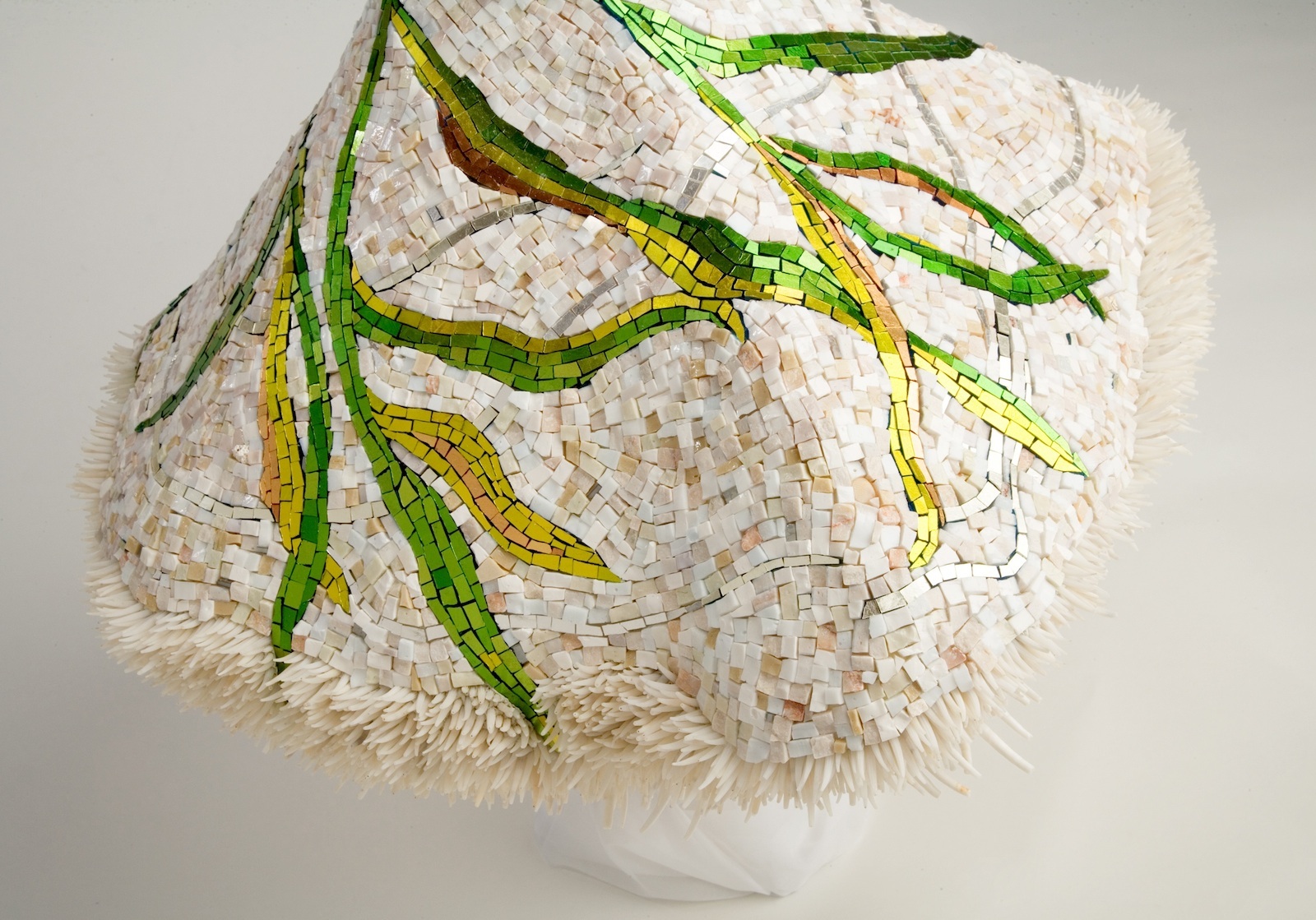Mosaic artist Julie Richey spent two months working to bring a mannequin to life.
She started with a tiny torso that a jeweler might use to display precious gems. She added carved Styrofoam, then fiberglass mesh and a skim coat of Thinset.
Then came the marble flecked with golden yellows, followed by the Carrara and the refined and precious smalti from Orsoni in Italy.
Not to mention the tiny sea spines. She used thousands of them, known also as dentalia in Latin, since they’re actually the hollow tusks of miniscule sea creatures. Once used as money by Native Americans, they’re still incorporated into their beadwork today, as necklaces, chokers and earrings.
But Julie applied them with tweezers – about six pounds of the smooth little teeth weighing less than an eighth of an ounce each – to create a ruffle for her mosaic skirt that adorns the work she calls La Corrente, or the current.
It’s named for the swirling movement of the 24-karat green and copper and gold sea grass sweeping across the sculpture.
“It gradates from dark at the bottom to lighter at the top,” she says. “It’s like the seabed, with the white gold lines, and the current that moves the sea kelp around.”
She took her inspiration from the Gulf of Mexico. Not only is it threatened deep water drilling and hurricanes but also by another natural phenomenon.
“The Gulf is in jeopardy,” she says. “The sea life there is threatened by giant sea kelp – a non-native species that’s arrived by way of ships from other seas. So La Corrente is about the fragility of nature, and a call to preserve these natural habitats.”
The 29-inch tall, 22-inch wide sculpture weighing a total of 15 pounds rests now, appropriately enough, on a low bookshelf in the living room of a museum curator’s residence.
For more, go here.
[slideshow id=214]


